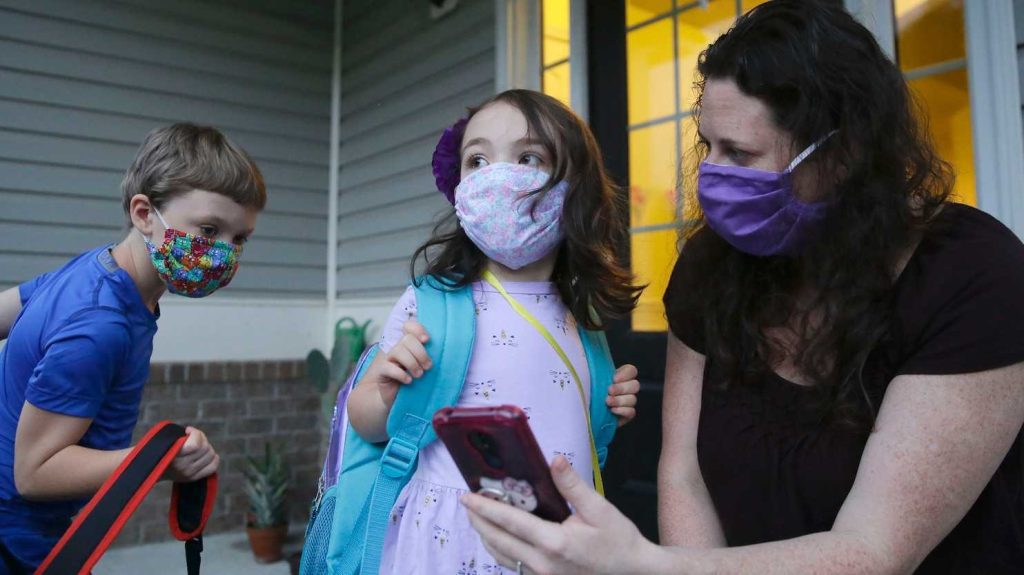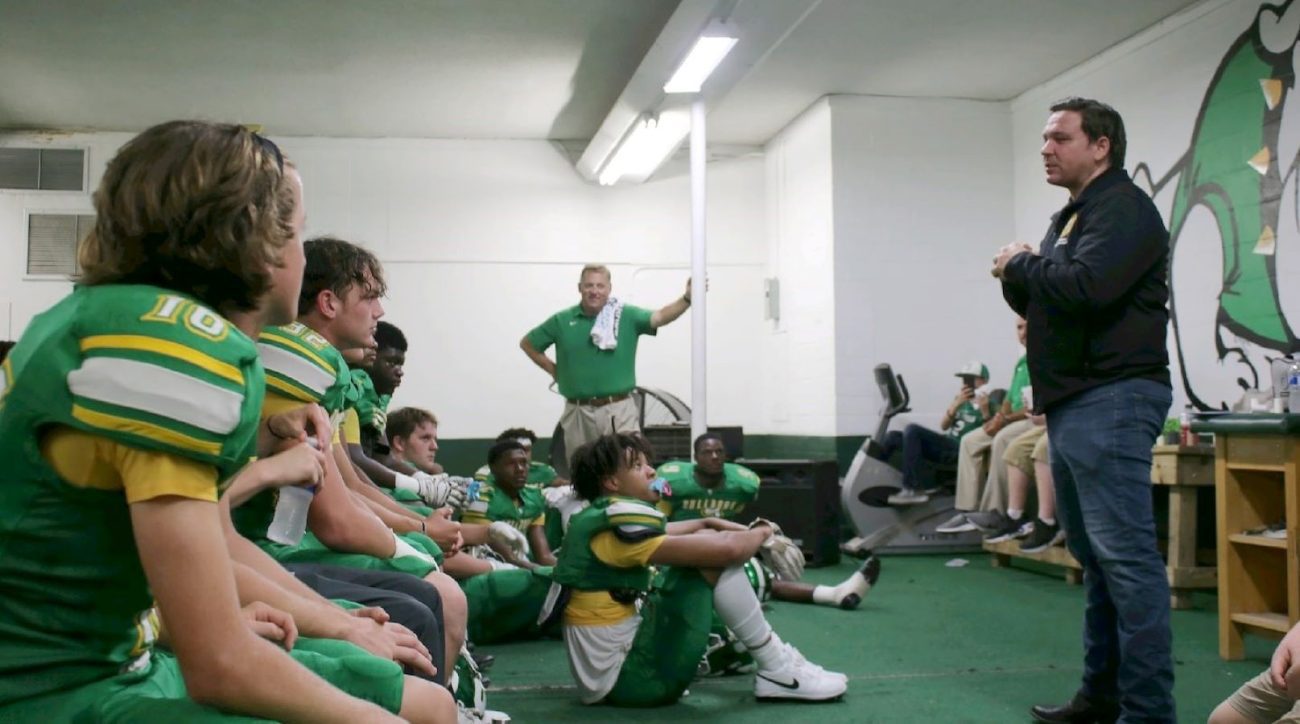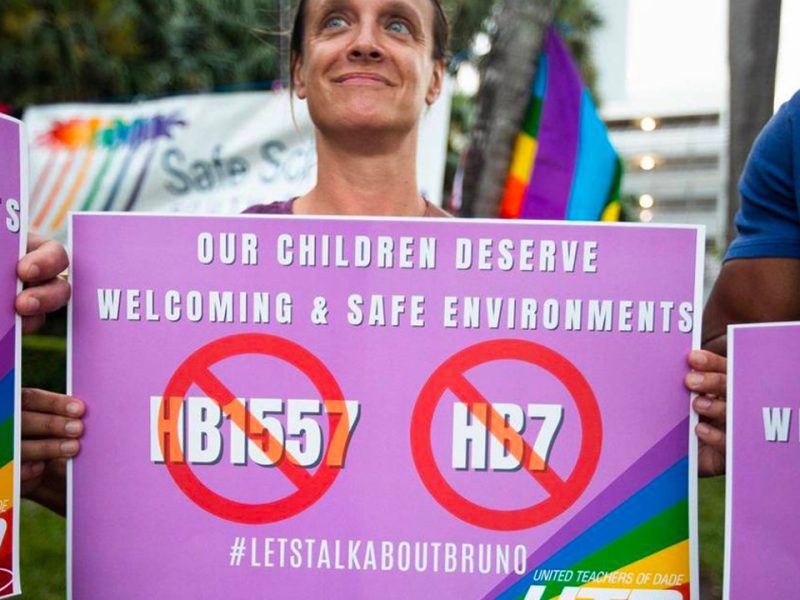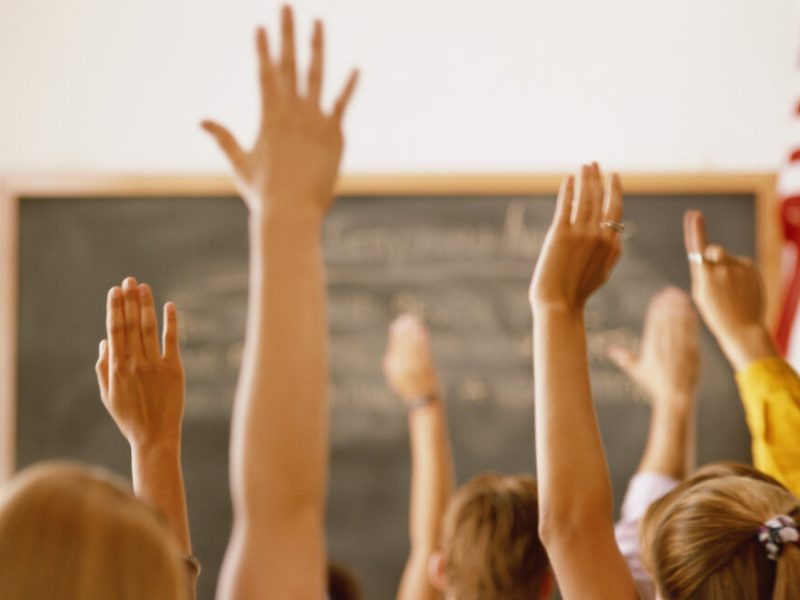Coronavirus cases spike among school-age children in Florida, while state orders some counties to keep data hidden
Washington Post | by Lori Rozsa and Valerie Strauss | September 9, 2020
WEST PALM BEACH, Fla. — One month into the forced reopening of Florida’s schools, dozens of classrooms — along with some entire schools — have been temporarily shuttered because of coronavirus outbreaks, and infections among school-age children have jumped 34 percent. But parents in many parts of the state don’t know if outbreaks of the virus are related to their own schools because the state ordered some counties to keep health data secret.
Volunteers across Florida have set up their own school-related coronavirus dashboards, and one school district is using Facebook after the county health department was told to stop releasing information about cases tied to local schools.
Gov. Ron DeSantis (R) has pushed aggressively for schools to offer in-person classes, even when Florida was the hot spot of the nation, and threatened to withhold funding if districts did not allow students into classrooms by Aug. 31. In the state guidelines for reopening schools, officials did not recommend that coronavirus cases be disclosed school by school. In fact, the DeSantis administration ordered some districts, including Duval and Orange, to stop releasing school specific coronavirus information, citing privacy issues.

Washington Post reporter Chelsea Janes details the possible role that children play in spreading coronavirus and how this impacts school reopenings. (John Farrell/The Washington Post)
The state also left it up to districts to decide whether masks should be worn by students and staffers. Some require it, but many don’t.
Department of Health spokesman Alberto Moscoso said in an email last week that “the Department is currently working to determine the best and most accurate manner in which to report information regarding cases of covid-19 associated with schools and daycares.” He said the information will be available “in the coming days or weeks.”
Florida is further into the reopening process than most other states, and DeSantis has been more aggressive than other governors in pushing schools to reopen and setting a deadline. The Texas state government wanted schools to open buildings but are allowing districts to operate remotely for some time. In Iowa, where schools are reopening this month — some remotely for two weeks with state permission — Gov. Kim Reynolds (R) ordered districts to open buildings for families that wanted in-person instruction. The order is being challenged in court.
Florida school districts began opening in early August, and by mid-month about half the state’s 4,500 public schools had students in their buildings. Three large districts were permitted to stay online because of high coronavirus infection rates — those of Miami-Dade, Broward and Palm Beach counties. Parents could choose between keeping their children at home or sending them to school, and about half of the states’s 2.8 million K-12 students opted to return to bricks-and-mortar classrooms.
Since Aug. 10, at least 1,210 students and teachers have been sent home to quarantine because they were exposed to the novel coronavirus, according to the Florida Education Association, the teachers union.
The Florida Department of Health reported that 10,513 children under age 18 have tested positive since schools started reopening for in-person teaching, an increase of 34 percent. The state is not saying how many of those children were in school or doing remote learning.
“I have filed public records requests like we were told, but no one will even fill them,” said Bridget Mendel, a parent in Manatee County in southwest Florida. “This is outrageous, and I am worried for my teacher friends and our children in Manatee.”
With the dearth of reliable school-specific information on coronavirus cases, teachers and parents are trying to fill in the gap. Anonymous Twitter accounts have sprung up since school began, started by Florida teachers who want to report what’s happening in their schools but who say they are afraid of being fired if they do so publicly.
“Transparency is a huge issue,” said Andrew Spar, president of the Florida Education Association, which represents 150,000 teachers and school staff and has sued the DeSantis administration over opening schools too soon. “Parents like myself who have kids in the classroom are wondering, are they safe? And we want answers from the governor, but instead he’s quashing information.”
Leon County Circuit Judge Charles W. Dodson ruled in favor of the teacher’s union, agreeing that the state had “disregarded safety” in the order. Dodson cited evidence that showed state health officials were told not to give their opinions on the safety of reopening schools in their counties. Dodson’s decision is being appealed by the state.
Across the country, there is a patchwork of requirements on the release of school-related coronavirus data. In Texas, for example, the state this week just started requiring districts to disclose to state agencies which schools have cases. The data will be published, but it is unclear whether it will be school-level or district-level. California does not require that districts disclose school-by-school information but recommends it.
The U.S. Centers for Disease Control and Prevention, as well as the World Health Organization, recommend a local positivity rate for the coronavirus that is below 5 percent for the safe reopening of schools. But many of Florida’s 67 county school districts opened with higher positivity rates. The overall child positivity rate in the state is 14.5 percent.
Parents deciding not to send their children into school said confusion over how they would get information about coronavirus exposure in schools was a factor in their decision.
“It seems more like information is leaking out instead of coming from the school board,” said Dawn Herring, a suburban mother in Pinellas County, which includes St. Petersburg. She and her husband opted for virtual classes for their two elementary-school-age children.
“Our family would have to see some more information on the case numbers, and on mask compliance and social distancing, before we send our kids back,” Herring said.
A number of school districts have published specific coronavirus infection rate data on their websites, but the state pushed back. After the Duval County school district in northeast Florida published a coronavirus dashboard during the first week of school, the state ordered it shut down within days, citing privacy concerns. The district launched a new dashboard Tuesday and the state did not intervene.
In Orlando, the Orange County health department was told Sept. 3 to stop releasing information about coronavirus cases tied to local schools. But the school district began listing schools with positive cases on its Facebook page within days. “Olympia High School will temporarily close and pivot” to a virtual platform, the district reported on its Facebook page Monday. It said six people had tested positive.
The Florida Department of Health released a report that detailed coronavirus cases linked to schools on Aug. 24 — reporting that 194 students tested positive in cases associated with primary and secondary schools — but it was quickly removed from public view. Moscoso said the report was released “inadvertently,” and DeSantis said the report “was not necessarily accurate.”
Many schools send individual emails to parents if cases are detected in their child’s school, but it’s not required by the state, and the information is not made available to the general public.
Martin County, the northern neighbor to Palm Beach County, opened Aug. 11. Students at SeaWind Elementary School in Hobe Sound were sent home to quarantine the next day. Within a week, the district told local news outlets that it sent 292 students and 14 teachers from five schools to quarantine. However, the school district does not have a coronavirus dashboard and hasn’t released numbers since then.
Other school districts have created their own dashboards, and the state has not shut them down. Some are more detailed than others. Hillsborough County, for example, lists daily cases and names the schools.
The Hillsborough school board had voted to offer only virtual classes until mid-September. But state officials told the district, which includes Tampa, that it would forfeit more than $200 million in funding if it didn’t open school buildings. The district opened Aug. 31, and it reported 181 cases in the first five days of class, including 45 children.
“I think we should have waited a couple of weeks before we opened our doors. We could have come up with some more creative solutions,” said Hillsborough school board member Tamara Shamburger. “We were absolutely strong-armed and bullied into this.”
Coronavirus case numbers have been steadily declining in Florida since July, when the state saw a spike that made it the nation’s hot spot for weeks. However, infection rates vary across counties; Martin County, for example, has a positivity rate of 23 percent for school-age children. Glades County, west of Lake Okeechobee, has had a positivity rate of nearly 30 percent since schools reopened, but the school district there does not have a coronavirus dashboard.
A total of 652,148 positive cases have been reported in the state since the pandemic began, with 12,269 deaths, as of Wednesday, according to state data.
Even before the case numbers started to fall, DeSantis was pushing for schools to reopen, and last week he painted a rosy picture of the status of the pandemic in Florida, where the statewide positivity rate was 6 percent on Wednesday. Visiting a few Florida cities with Scott Atlas, President Trump’s new coronavirus adviser, DeSantis said last week that the worst of the pandemic was over.
“We will never do any of these lockdowns again,” said the governor, who imposed a stay-at-home order in April as coronavirus rates rose. In March, thousands of students on spring break visited the state and the beaches were packed.
The Florida Department of Education leaves mask mandates up to school districts, and many counties have left the decision up to students.
“Masks are highly encouraged, but we felt people could make a personal decision about that so we didn’t mandate it,” said Bill Brothers, assistant superintendent of administration for the Suwannee County School District. “But we certainly encourage it. I’d say half do and half don’t.”
Suwannee, a small rural county in northern Florida, had an under-18 coronavirus positivity rate of 21.7 percent as of Friday. Several months ago, an outbreak at a nursing home there gave the county one of the highest rates in the state.
Schools reopened Aug. 10, and coronavirus cases were reported in schools that week. The news of the cases was spread by word of mouth rather than official channels, said high school teacher Eric Rodriguez.
Rodriguez talked to local media about the cases he knew about, and he shared a video of crowded hallway — with students’ faces blurred. He was then suspended from his job for a day.
“My concern was there were no plans for social distancing, and no mask mandate,” said Rodriguez, who is also a teachers union representative. “I had teachers calling me over the summer, saying they were scared to go back to work.”
He said many businesses in the county, and county offices, require masks, but the schools do not.
Suwannee High School played its first football game Friday night, and DeSantis attended. “I think you’re going to see sports all throughout the 67 counties real soon,” the governor said.
Florida Education Commissioner Richard Corcoran said DeSantis gave Suwannee players a locker room pep talk. Corcoran quoted the governor in a tweet: “If you all lived in California, do you know where you’d be tonight? On your couch!” (The Suwannee Bulldogs beat the Santa Fe Raiders, 41-10.)
Rodriguez said many of his students at Suwannee High agree with the science that says mask-wearing helps prevent the spread of the virus, but they’re taking cues from their parents.
“I think some of them are hearing from their parents that they won’t wear a mask, and it’s no big deal, so what are you afraid of?” Rodriguez said. “In this part of the world, they either think it’s a hoax, or that a little covid won’t kill you.”
In other parts of the state, such as Osceola County in central Florida, masks are mandatory, but coronavirus cases are still being reported. The school district closed Harmony Middle School entirely last week and sent 595 students home for a 14-day quarantine after 10 staff members tested positive.
Jennifer Bee Wright’s daughter is a student at Harmony. She said the school let parents know through phone calls about the shutdown, and also offered coronavirus testing to students.
Wright said she initially was fine with sending her daughter to in-person classes because she trusted that “common sense” would keep kids safe. She also said her daughter really wanted to go back.
“My daughter likes to be in school with the teachers,” she said. “It really does make a difference mentally for kids to be social with one another and get out of the house.”
Still, when Harmony opens it doors again to students Sept. 14, Wright’s daughter might not be going back.
“We will probably keep her home until all this goes away,” Wright said. “Not because we are scared to get sick, but because I don’t want to pull her in and out of school, and have to worry and stress her out about the change if it happens again, which I’m sure it will.”






